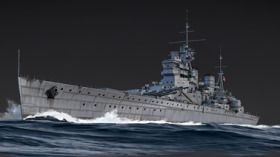
- For PC
- For MAC
- For Linux
- OS: Windows 10 (64 bit)
- Processor: Dual-Core 2.2 GHz
- Memory: 4GB
- Video Card: DirectX 11 level video card: AMD Radeon 77XX / NVIDIA GeForce GTX 660. The minimum supported resolution for the game is 720p.
- Network: Broadband Internet connection
- Hard Drive: 22.1 GB (Minimal client)
- OS: Windows 10/11 (64 bit)
- Processor: Intel Core i5 or Ryzen 5 3600 and better
- Memory: 16 GB and more
- Video Card: DirectX 11 level video card or higher and drivers: Nvidia GeForce 1060 and higher, Radeon RX 570 and higher
- Network: Broadband Internet connection
- Hard Drive: 62.2 GB (Full client)
- OS: Mac OS Big Sur 11.0 or newer
- Processor: Core i5, minimum 2.2GHz (Intel Xeon is not supported)
- Memory: 6 GB
- Video Card: Intel Iris Pro 5200 (Mac), or analog from AMD/Nvidia for Mac. Minimum supported resolution for the game is 720p with Metal support.
- Network: Broadband Internet connection
- Hard Drive: 22.1 GB (Minimal client)
- OS: Mac OS Big Sur 11.0 or newer
- Processor: Core i7 (Intel Xeon is not supported)
- Memory: 8 GB
- Video Card: Radeon Vega II or higher with Metal support.
- Network: Broadband Internet connection
- Hard Drive: 62.2 GB (Full client)
- OS: Most modern 64bit Linux distributions
- Processor: Dual-Core 2.4 GHz
- Memory: 4 GB
- Video Card: NVIDIA 660 with latest proprietary drivers (not older than 6 months) / similar AMD with latest proprietary drivers (not older than 6 months; the minimum supported resolution for the game is 720p) with Vulkan support.
- Network: Broadband Internet connection
- Hard Drive: 22.1 GB (Minimal client)
- OS: Ubuntu 20.04 64bit
- Processor: Intel Core i7
- Memory: 16 GB
- Video Card: NVIDIA 1060 with latest proprietary drivers (not older than 6 months) / similar AMD (Radeon RX 570) with latest proprietary drivers (not older than 6 months) with Vulkan support.
- Network: Broadband Internet connection
- Hard Drive: 62.2 GB (Full client)
For a better comparison, watch the video in full-screen and at the highest quality.
Very soon, we will be introducing a new render for War Thunder, and we would like to familiarize you with the changes that players can expect to see in update 1.77. Today we will talk about temporal anti-aliasing technology.
In the upcoming War Thunder 1.77 update, we are introducing a new version of the Dagor Engine graphics engine and we want to tell you about a few new opportunities this render provides. One of the innovations is a new anti-aliasing algorithm – temporal anti-aliasing (TAA). Anti-aliasing is used in computer games to neutralize the effect of pixelation at the edges of objects. We previously used FXAA (Fast approXimate Anti-Aliasing) and MSAA (Multisample Anti-Aliasing). FXAA and MSAA provide far more humble results in graphics quality, smoothing only the edges of polygons or the sharp borders of images with various algorithms.
FXAA is an anti-aliasing algorithm that works on a resulting image, trying to find and smooth visual borders without taking into account depth and source geometry. This allows the algorithm to work very quickly, and in addition makes it compatible with any type of render, including deferred render, the technology that is currently a de facto standard in video games
MSAA is an algorithm implemented into the video card (hardware), antialiasing geometrical boundaries by means of additional samples at the border of the triangles. This provides a better visual result for silhouettes and remote objects at the expense of higher performance cost. This technology virtually provides antialiasing for boundaries (silhouettes) of geometrical objects and does not improve visual quality elsewhere. Besides this, such technology is hardly compatible with deferred render in practice and an acceptable result for modern rendering requires additional tricks, leading to additional calculation costs and visual issues and limitations.
TAA – temporal anti-aliasing – calculates a specific number of previously rendered frames, taking into account the position of pixels dynamically. Visually, the new anti-aliasing algorithm provides a sharper image and reduces “noise” on the edges of objects and blinking on shiny surfaces. Additionally, it not only successfully smooths edges and borders, but also adds details. It basically works by rendering the image at high resolution and then reducing it to the size of your screen.
Temporal anti-aliasing somewhat has an affect on frame rate, so we recommend you use the new anti-aliasing method on medium-high level graphic cards. By default, temporal anti-aliasing will be enabled for maximum graphics settings. For other graphics presets, the new anti-aliasing algorithm can be selected in the graphics settings in the form of two options: TAA and HQ TAA. These options differ in quality of dynamic objects.
The War Thunder Team






Comments (131)
Good job, does the 5.0 version offers other things that you can't talk right now?
Yup :)
Stona_WT, Very exciting, new AA looks great!
Will this change how planes are rendered in front of bright clouds? Currently planes disappear when in front of cloud formations, which has led to many of my deaths as you can't often see them (especially in head-on situations) until it's too late
oh sweet
looks great! also this would be a great patch to drop HE 177 papa bless <3
very low settings FTW.
No.
Well, imo there are things that are really great in this game and others that might need a rework. And graphics most certainly aren't one of the latter... Yes, some people always complain, sure, but why improving stuff that is already great, instead of the ones that actually need a fix?? I don't get it.
I don't get why people select one feature and focus on it, pretending that updated bring NOTHING except that feature. It's really strange.
Stona_WT, Since this very dev blog is about the new graphics engine, I talk about the new graphics engine. Surprised??? o.O I will talk about the other stuff in the other dev blogs. Which I'm pretty sure I'm really looking forward to. ;) ...A good example for you guys being unable to hear some criticism! Also, I said that there are lots of great things in this game. Pls read! How dare me not saying this looks awesome. What a poor response Stona, seriously. Especially since I think I said it nicely...
no more tree fuzzyness? good job!
this game already looks amazing.. im really impressed with what dagor engine can achieve honestly.. it's a remarkable game and also amazing work you guys put on maps and models.. thanks alot.
Thank you for your great work!
This is a long awaited update. Awesome.
Submit a complaint